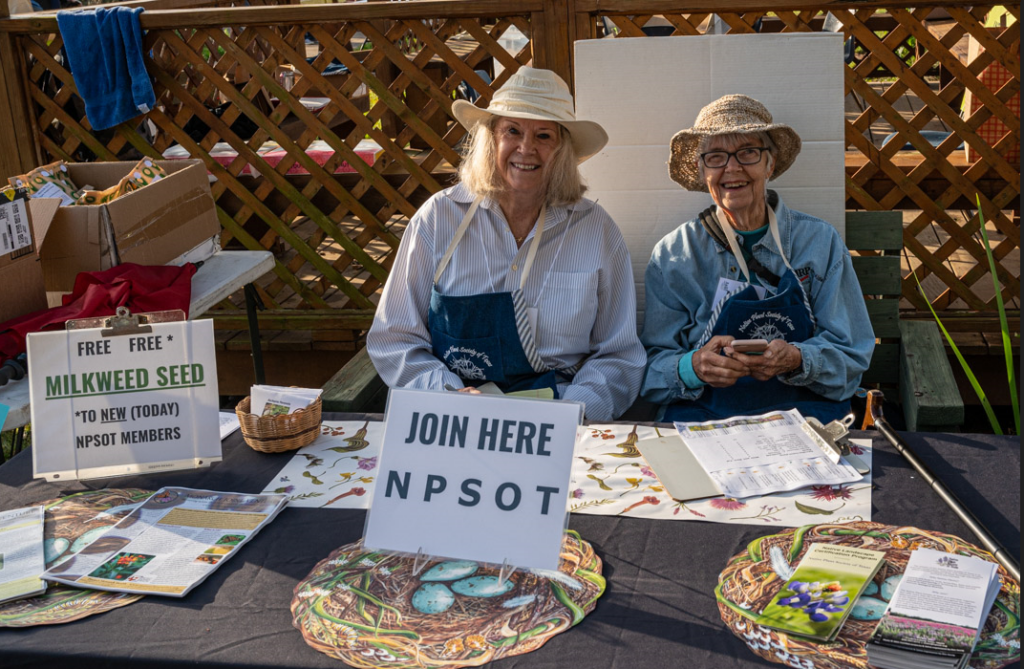
Join
For first time members, read the instructions below. To renew your membership, see Renew Membership below.
Join By Mail
Give a Gift Membership
To purchase a NPSOT Membership as a gift for someone else complete this application. Your recipient will receive an immediate notification email upon submission, followed by the standard new membership packet by mail.
Benefits of Membership
Free subscription to our quarterly member’s magazine, either as an electronic copy or a hard copy through the mail. Some chapters also publish local newsletters for their own members. Discounts are available to members at many nurseries and related businesses. Check with your local chapter to find those near you. Discounts on registration fees for our classes, symposiums and other events. Best of all you become an important part of a statewide community with over 4000 members, who are united in our mission to promote Texas native plants. You may choose to become a member of one of our local chapters with the opportunity to participate with like-minded members in a host of programs and activities that help you learn about and deepen your appreciation for Texas native plants.
Membership Levels
All membership levels, except for the individual membership, include benefits for your entire household. All levels allow membership in at least one chapter of your choice. Depending on your membership level you may also join one or more additional chapters. If you do not wish to be join a chapter you can designate yourself a “member-at-large.”
Once you become a member, you will have access to our Membership Portal.
| Individual | ||
| One Chapter | $45/year | |
| Two Chapters | $51/year | |
| Three Chapters | $57/year | |
| Four Chapters | $63/year | |
| Senior/Student/Limited Income (household) | ||
| One Chapter | $35/year | |
| Two Chapters | $41/year | |
| Three Chapters | $47/year | |
| Four Chapters | $53/year | |
| Family (household) | ||
| One Chapter | $60/year | |
| Two Chapters | $66/year | |
| Three Chapters | $72/year | |
| Four Chapters | $78/year | |
| Patron (household) | Up to Four Chapters | $100/year |
| Benefactor (household) | Up to Four Chapters | $250/year |
| Supporting (household) | Up to Four Chapters | $500/year |
| Lifetime (household) | Up to Four Chapters | $1,200 – one time |
Current or Former Members & Account Help
Renew Membership
If you are a current member, or a former member who has been active since 2018, you already have a NPSOT account in our membership database. Please do not create a new account! Click here to log in to the member portal for renewal, or to rejoin.
If you forgot your login name or email, or have not set up a login and password, just click “Having Trouble Logging In” to receive instructions to reset your password or create a login and password.
If your membership has not been active since 2018, click here to rejoin.
By Mail
If you would prefer to renew by mail, you can access that form here.
Membership Coordinator
If you have any questions about your membership, including your membership dates, please reach out to our Membership Coordinator.
